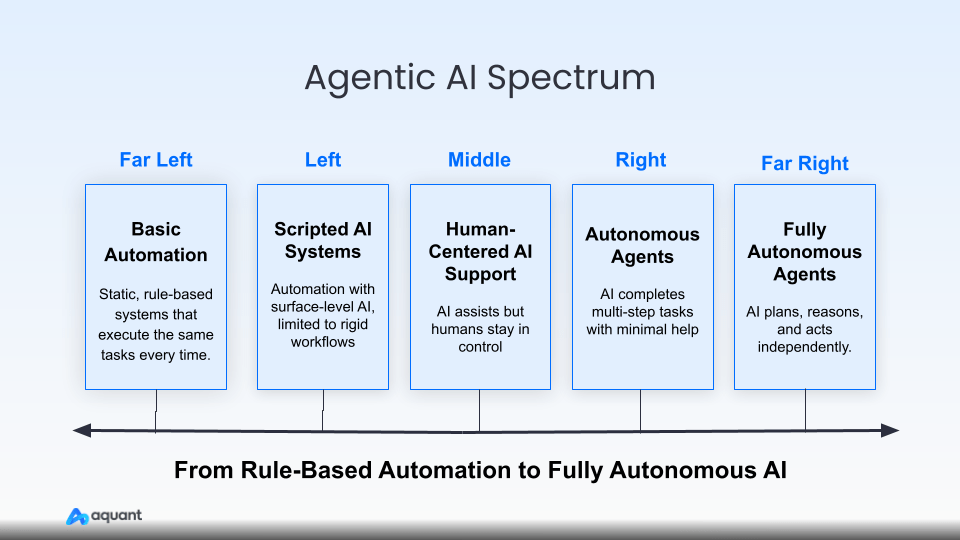By: Ateret Levin and Assaf Melochna
A 2024 report from IHL Group paints a clear picture: 80 percent of AI projects fail. Despite large budgets, strong interest, and growing momentum, most AI initiatives in retail never move beyond the pilot phase. PwC’s 2024 Hopes and Fears survey adds another layer to this reality. While employees are becoming more optimistic about AI’s potential to improve productivity and job satisfaction, many still feel uncertain. They’re unsure how the technology will be rolled out and whether their organization is ready to lead that kind of change. A 2023 article in Harvard Business Review echoes this concern, pointing to unrealistic expectations, poor strategic alignment, and the challenge of integrating AI into existing workflows as major causes of failure.
Generative AI is still in its early stages, and some of these struggles can be chalked up to growing pains. But when you look more closely, it becomes clear that technical complexity is not the main reason projects fall short. Building AI systems is hard. It requires deep expertise, cross-functional collaboration, and significant investment, but even the most advanced AI products will stall if the organization isn’t ready to adopt and operationalize them.
The deeper problem is organizational. Too often, teams are unclear about the problem they are solving, underestimate the resources required, or face pushback from employees who feel left out of the process.
IT and AI leaders need more than technical know-how. They need to be able to guide their organizations through change. This is not just about launching a product or delivering a new capability. It is about creating clarity, building trust, and helping people adjust their behaviors.
John Kotter’s 8-Step Process for Leading Change offers a clear structure for navigating transformation. It outlines what is needed to move from a compelling vision to actual, lasting results.
Here is a quick look at the eight steps:

From the perspective of an IT/AI leader, it helps to think about these steps in two phases.
The first three are about creating the conditions for change. You set the tone, rally the right people, and clarify the path ahead. These steps are often led by senior leadership and happen early in the process.
The remaining five steps are about delivering results. They involve turning the vision into reality, keeping people engaged over time, and ensuring the change sticks. This part is slower, more complex, and much more people-driven. It touches teams across the entire organization and requires a strategy that prioritizes people just as much as it prioritizes technology.
Publications like Harvard Business Review and Business Insider point to a recurring theme. Employee resistance to AI comes from uncertainty and a lack of understanding. People feel anxious when they don’t fully grasp what the technology does or how it will affect their role. They worry about losing control or being replaced. As Harvard Business Review puts it, “when employees feel like change is being done to them rather than with them, resistance is inevitable.” Business Insider adds that AI rollouts fall flat when organizations fail to show employees how the change benefits them personally, not just the business.
In the absence of clear communication, fear often fills the gap. Employees may question the new tools’ accuracy, reliability, or usefulness. They may disengage, push back, or quietly revert to old habits.
This is why a people strategy matters. Here are five core principles to help shape it:
1. Create a Positive First Experience
When my kids were young, I was nervous about taking them to the dentist for the first time. We found a clinic in Brookline, Massachusetts, that had carefully designed the experience to put children at ease. The waiting room felt warm and welcoming. The staff explained everything calmly and clearly. At the end of the visit, the dentist gave my son a printout of a selfie with him to hang on the wall in his room, and a small keepsake box for his baby teeth. He had two teeth removed that day without even realizing it. Eight years later, my kids still enjoy going to the same dentist.
Your AI launch should be no different. Design the training and onboarding experience to be simple, supportive, and confidence-building. A positive first interaction creates momentum and builds trust that lasts.
2. Identify Change Ambassadors
Every organization has people whom others look to for guidance. These individuals are not always senior leaders. They might be team leads, long-time employees, or well-respected peers. Identify and involve them early. When these individuals show confidence in the change, others are more likely to follow.
3. Make the Benefits Personal
Every employee is asking the same question: how does this help me? Speak directly to their day-to-day experience. Show them how the technology will reduce friction, save time, or make their work more meaningful.
But don’t stop there. Personal benefit goes beyond efficiency. In many cases, the most compelling motivator is professional growth. Using the new tool might give someone an edge in the job market by helping them learn a technology that is increasingly in demand. This is especially relevant for technical roles, like field technicians or IT professionals, who see these skills as building blocks for future opportunities.
There is also room to design internal career advantages. For example, you can tie usage of the tool to certifications, access to new roles, or eligibility for promotion. One Satellite TV organization I worked with made this tangible. They introduced a new field system alongside upgraded vans for technicians. The new tool allowed each technician to manage their van stock independently. The message was clear: they were now running their own mobile business. It wasn’t just about learning a new system, it was about taking ownership, gaining autonomy, and building credibility inside the company.
When employees see personal value, whether that means more control, new skills, or career momentum, they become far more likely to engage with the change.
4. Teach People How It Works
One of the best examples I’ve seen came from a customer who built a Star Wars-themed scavenger hunt into their AI rollout. Each day for five days, users received clues that led them through specific features of the product. The challenge was playful and engaging, but it also taught users how the system worked and gave them a chance to explore it at their own pace. Their change management leaders were the best I’ve seen. Thoughtful, creative, and deeply aligned with what PwC’s 2024 survey found that employees are far more likely to embrace AI when they receive support and training.
5. Design for Operational Fit
Even the most advanced AI solution will fail if it doesn’t fit seamlessly into how work actually gets done. Integration is not just a technical hurdle. It is an organizational one. If teams need to switch between systems, duplicate inputs, or interrupt their normal flow, adoption will stall. As Harvard Business Review notes in the article Keep Your AI Projects on Track (Krishnan, Singh, and Xu, November 2023), “AI must be embedded in core business processes to deliver value. It shouldn’t be treated as an add-on or a side experiment.”
To succeed, AI tools should be designed with real workflows in mind. This means mapping out the daily tasks of the people expected to use the system, identifying where AI can reduce friction or add clarity, and building integrations that feel intuitive and supportive. When the solution fits into the existing rhythm of work, it becomes useful, usable, and sustainable.
In Summary
AI transformation is not simple. It is a complex, high-stakes undertaking that requires both technical excellence and organizational maturity. Projects often fail, not because the technology is flawed, but because the change it demands from people is underestimated.
Employees resist change when uncertain about what it means for their role, when communication is vague or top-down, and when they are left out of the journey. Fear and skepticism fill the void where clarity and support are missing.
Successful transformation depends on more than rollout plans and training sessions. It calls for a comprehensive people strategy that is as deliberate and well-resourced as the technical one. That includes crafting positive early experiences that build trust, identifying respected change ambassadors, making the impact of AI tangible and relevant to each individual, and investing in real learning. Not just tool demos, but a deep understanding of how the system works and why it matters.
Frameworks like John Kotter’s 8 Steps for Leading Change remind us that change must be led thoughtfully. Usually, leaders do an intense job in the early stages, such as building the business case for change, creating urgency, and aligning the right stakeholders. But the real test lies in what comes next. The remaining steps, which involve broad-based action, sustained momentum, and cultural integration, require a longer horizon and far deeper engagement across the organization.
This work is not easy. But when done with intention, empathy, and discipline, it is possible to turn AI from a stalled initiative into a sustainable, people-powered transformation.
Recent Posts
-
Championing Change: 5 Leadership Lessons from Aquant’s Change Management Masterclass
Read More »April 03, 2025 Courtney Stafford







